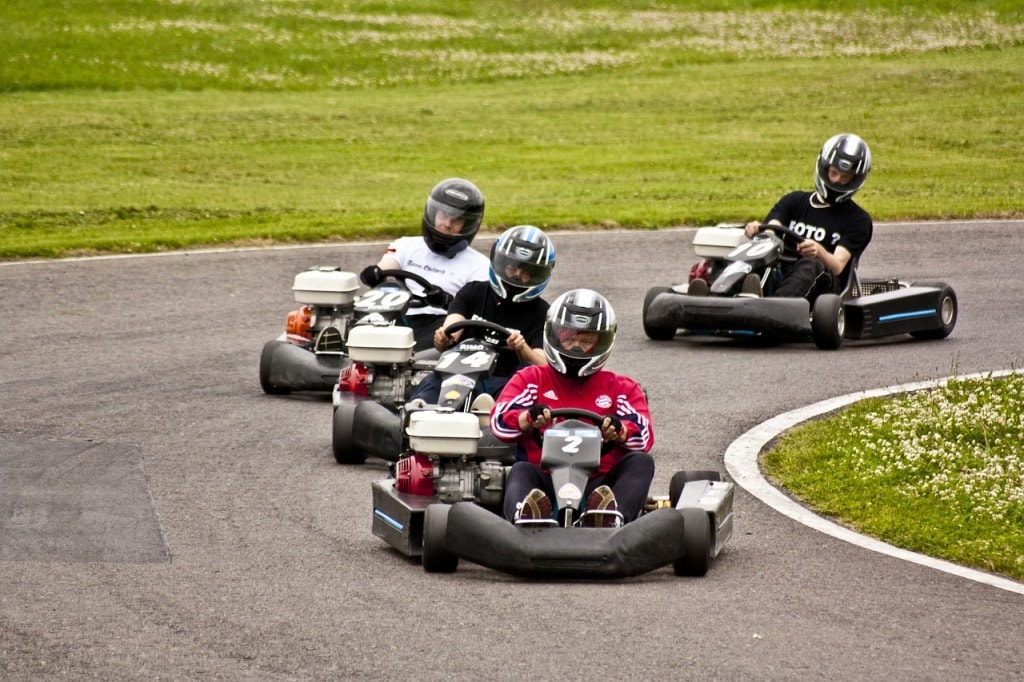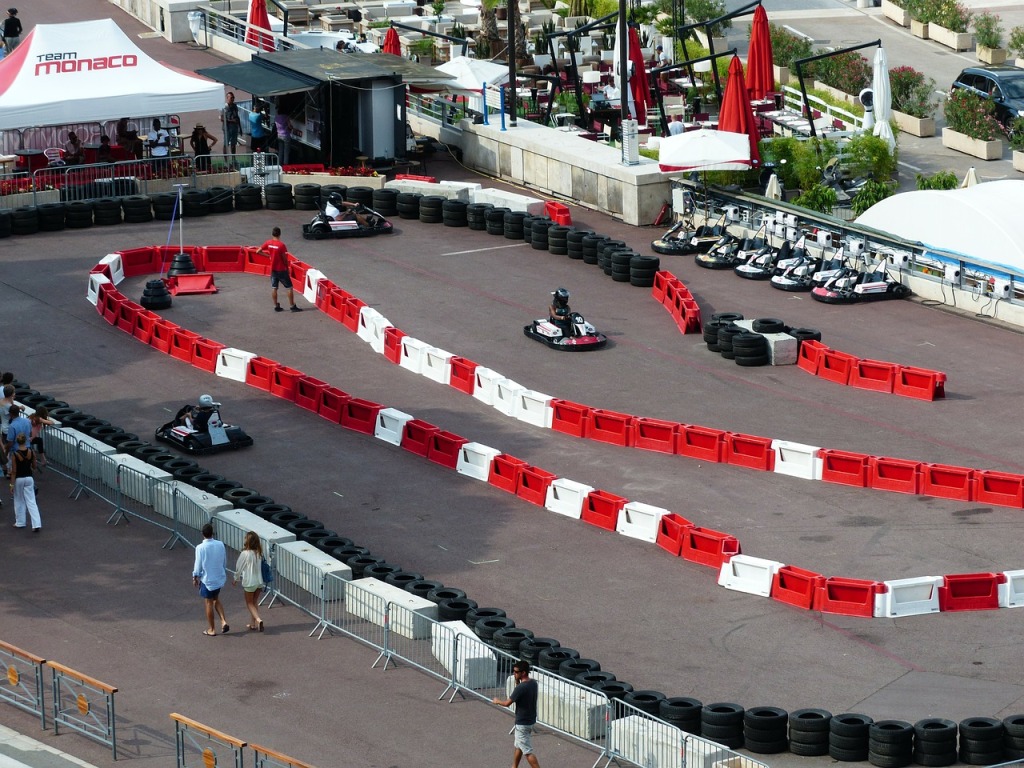Top 10 Things You Need to Know About Your Go Kart Transmission
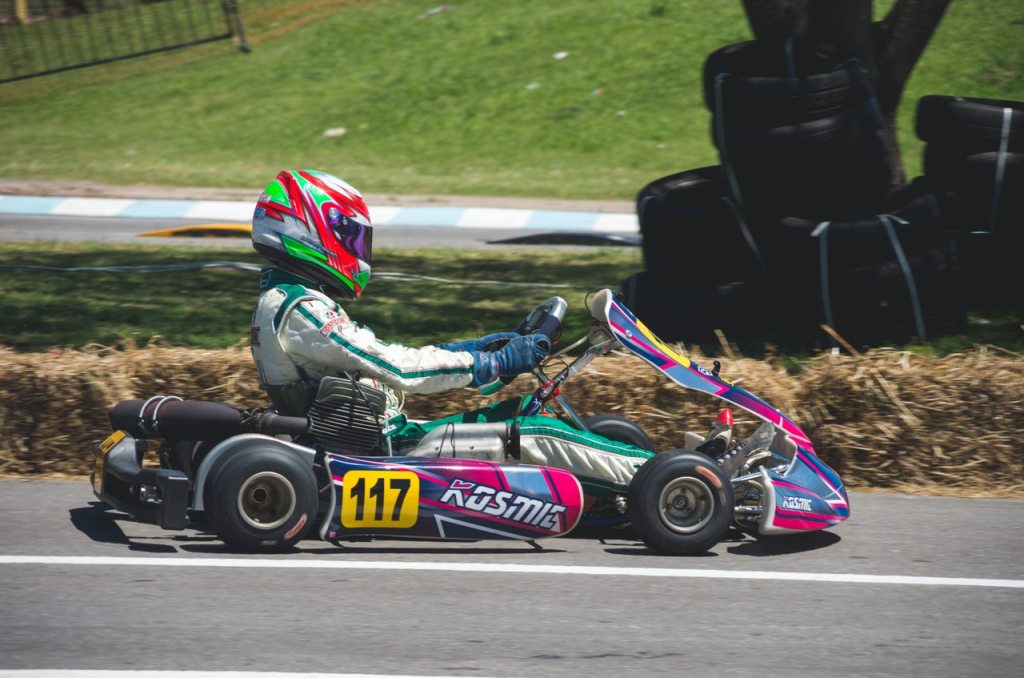
Riding go-karts professionally, or for fun, can be quite satisfying. Knowing about the various parts of a go-kart, including the transmission, will help you make the most of your riding time.
The following list will help you learn more about your kart's transmission and help you maneuver the vehicle better on the course, in your backyard, or wherever you may ride it.
Go-Kart Transmissions are Simple
Your go kart transmission has a basic simple, which is much simpler than the one on your car. There's a centrifugal clutch attached to the engine crankshaft extension. The clutch features an integrated chain sprocket. The rear axle has a bar, and a keyway mounted on the chassis by bearings.
There are wheels attached to the end of the rear axle, along with a chain sprocket in the middle. A motor sprocket aligns with the rear axle mechanism. A chain attaches the sprocket to transmit energy, and there’s a brake disc mounted on the axle.
How Go-Kart Clutch Mechanisms Work
The automatic transmission, or clutch, on your go-kart, starts when you increase the engine’s rpm. The kart engine manufacturer will set the idle speed during production. Most idle speeds range from 1450 rpm to 1850 rpm. Don’t engage the clutch when your go-kart is idle.
Go kart engines rev up to a certain limit, but you can damage the engine if you go beyond that. The engine's spark up limit is referred to as the "redline." The transmission lets you switch gears and change the gear ratio between drive wheels and the engine as you accelerate or slow your driving.
This transmission function lets the engine maintain "below redline" status and keep the correct rpm. A differential, or device that contains different gears isn't featured on most go-karts. Differentials allow carts to rotate their wheels at many speeds and deliver a forceful rotation.
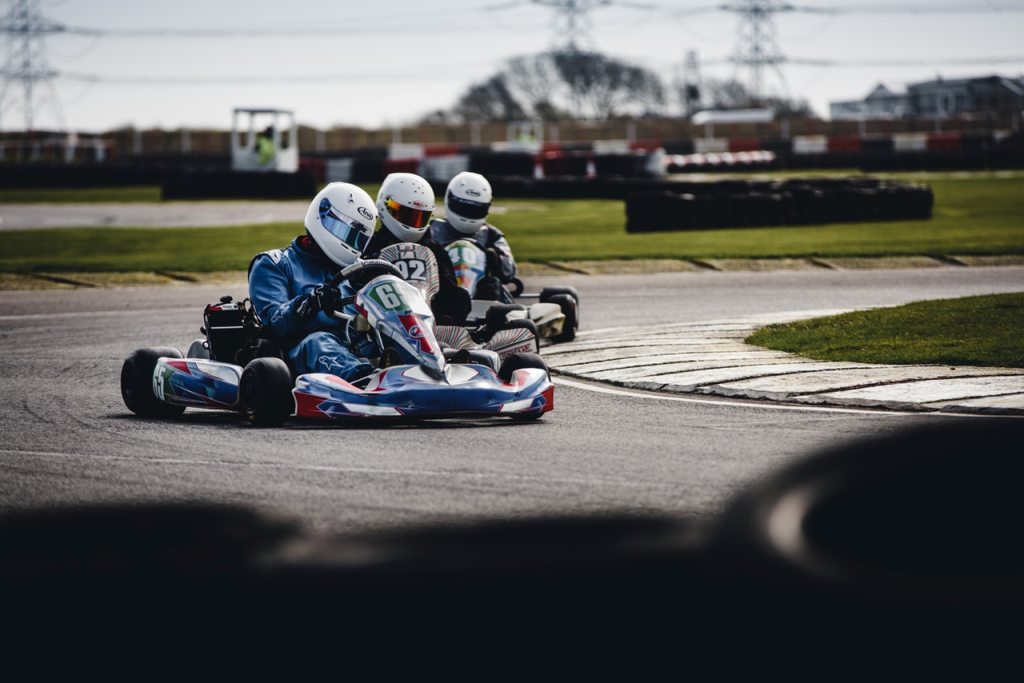
Image by Alex Andrews via Pexels
Go-karts can’t make sharp turns without a differential. You'll need a rear tire that's able to slide when you turn a corner to make up for this. The chassis should be constructed, so your inside rear tire lifts slightly when you turn a corner. When the tire lifts, it loses some of its grip and can side past the corner
Chains may Affect Your Clutch
Go kart chains stretch and may cause problems after you've used them for a while. Move your engine forward or backward if the chain begins to fall off the sprocket. The movement will help take up slack in the chain.
Use an open-end wrench and a 9/16th-inch socket wrench to loosen four bolts on the engine’s motor mount plate. Move the engine until you fix the slop in the chain. Your clutch, chain, and transmission system will be more predictable if you have less slop.
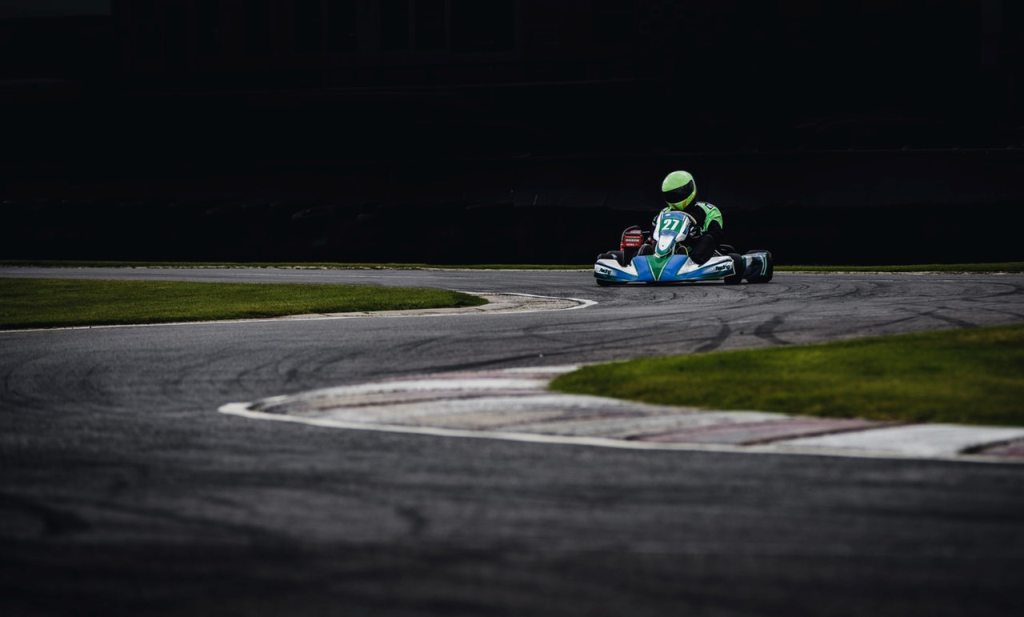
Image by Alex Andrews via Pexels
Tighten the bolts when you are done, but ensure that the two sprockets are aligned. The chain will come off if the sprockets are aligned unevenly.
Make sure you have a half-inch of play between the bottom and top of the clutch chain. Avoid pulling the engine back from the place where the chain tightest. The kart may move to the neutral position with no one riding it if the chain is too tight. A too-tight chain may cause the roller bearing or bushing to engage when your engine is idle.
Manual Transmissions May Be Better for You
Shifter karts with manual transmissions are popular in the U.S. A manual transmission has a clutch and six speeds manufactured to get the most speed and finesse out of the engine.
Learn what you need to do to change gears before taking your go-kart out for a ride. You may have to practice a while to get used to it.
Your kart's transmission helps it maintain the highest rpm possible. The transmission also prevents your go-kart engine from overheating. It may take a while to learn how to change gears manually, but once you master it, you'll reap the rewards and have a go-kart that's better to handle.
Using Belts in Your Go-Kart Transmission
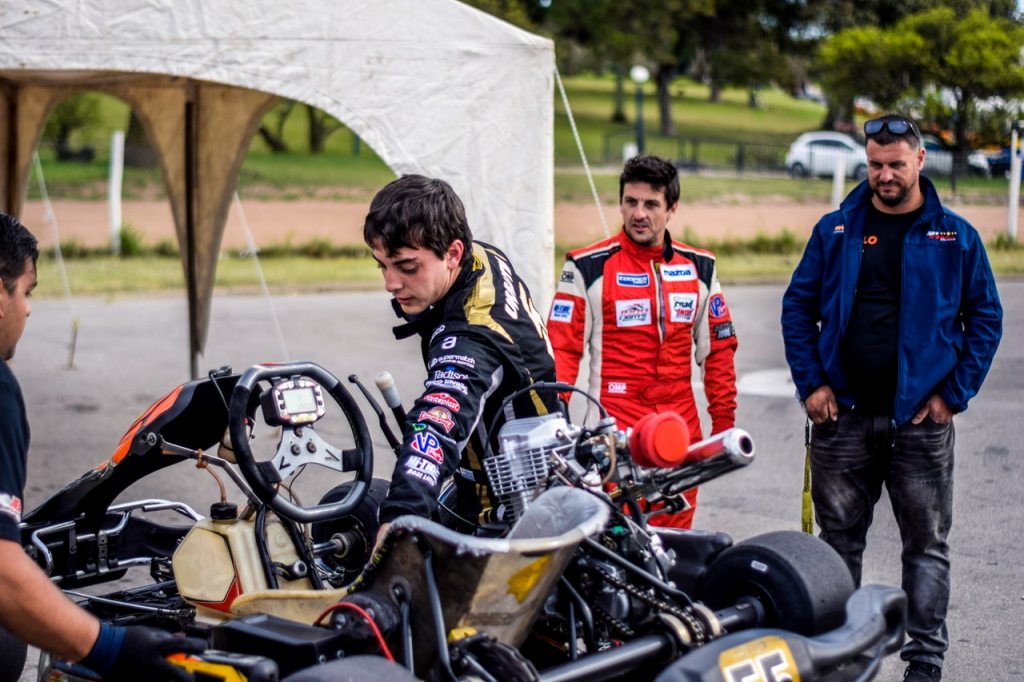
Image by Alex Andrews via Pexels
Certain transmission types use belt slip designs as a proxy clutch to let you drive without a real clutch if the belt tension is conceived well enough. Belts are a drawback because changing loads, mud and dirt damage belts beyond repair. A slipping belt may make your go-kart over rocky, rough terrain.
You Can Build Your Own Transmission
An experienced go-kart driver may want to branch out and build his or her own go-kart. You'll need to be familiar with all the components that make up a go-kart, no only the transmission.
If you know all the ins and outs of a go-kart, look for belts, a gearbox, chains, and gears from your local go-kart supplier, or gather parts from used transmissions.
Learn about your Gearbox
Learn all you can about gear ratio. Check the engine sprockets, and make sure the one on the rear axle has a 1 to 6 ratio (or close to it). The 1:6 ratio means that there are six teeth on the rear sprocket for each tooth on the clutch.
If there are ten teeth on the clutch, the rear sprocket should contain 60 teeth, and if you have 72 teeth on the rear sprocket, there will be 12 teeth on the clutch.
A go-cart with a torque converter features a variable speed system that can improve the gear ratio since it separates the driven pulleys and the driver. This system gives the torque converter an edge over a regular clutch.
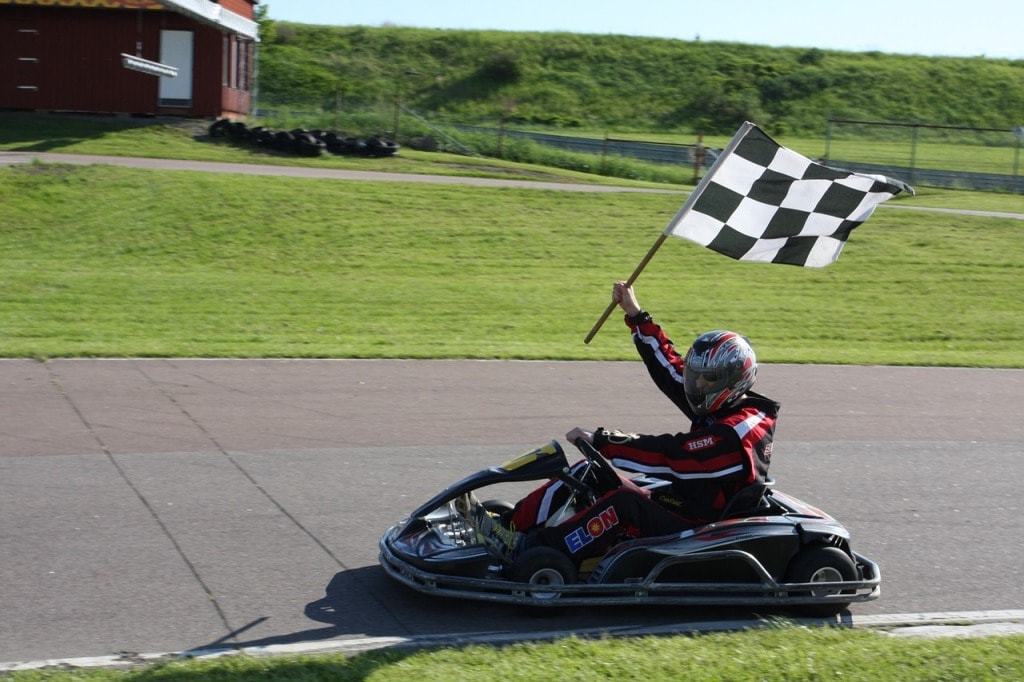
Image by spamforpic via Pixabay`
A torque converter boosts the ratio by about 3 to 1 and turns larger tires. With a converter, you can drive more slowly without damaging the clutch. You'll spend more money at first with a torque converter, but it will last longer than a common clutch system as long as you maintain it.
Watch The Weight Limit
A centrifugal clutch for a go-kart transmission moves a certain amount of weight. When the load exceeds the weight limit, the clutch will wear out sooner. The kart and driver (or drivers) should not be more than 400 pounds total.
A kart usually weighs around 150 pounds. Buy a go-kart with a torque converter if you know the kart will need to support more than 400 pounds.
How to Keep Your Transmission Working Longer
Put the right size tires on your go-kart. Clutch problems will occur if the tires are too large for the cart. Any tire that measures 13 inches or more will put excess pressure on the clutch unless the kart is built to handle the larger size. Using 14-inch tires may help you drive on flat terrain, but will wear out the clutch on deep grass or hilly areas.
Large tires look great on a go-kart but don't use them with a clutch that can't handle them. Oil the clutch to keep your go kart transmission working and prevent damage from overheating. The clutch won’t disengage if it has heat damage. The go-kart will take off as soon as you start the engine without any prodding on your part.
Heat damage is visible when you look in the clutch drum. The metal inside the drum will be blue instead of black. The clutch will not disengage if it has heat damage, so you need to replace it to prevent further problems. Warranty won’t cover heat damage.
Prevent heat damage by oiling the sprocket bushing for every two hours you drive. Oil the clutch frequently if you ride in a small space, have young children, or drive too slowly to engage the clutch adequately. Remember that the clutch generates heat until you're going fast enough to engage it.
Here’s a step-by-step guide to oiling the clutch and preventing heat damage.
Use any name brand automotive oil or 30-weight oil. Oil the chain at the same time to prevent it from getting kinky due to inadequate oil. Replace the chain if it’s damaged or you’ll need to get a new clutch, which is more expensive.
Watch Your Driving Habits to Preserve the Transmission
Drive for long or moderate distances instead of engaging in stop and go driving. Long drives at full throttle give to allow the clutch to cool before the next race or activity fully.
You should avoid driving with your foot on the brake. Practice driving in an open field if you’re new to go-karts, and learn how to use the gas and brake pedals properly. Once you master driving without obstacles, you can slowly move on to courses with cones or other obstructions.
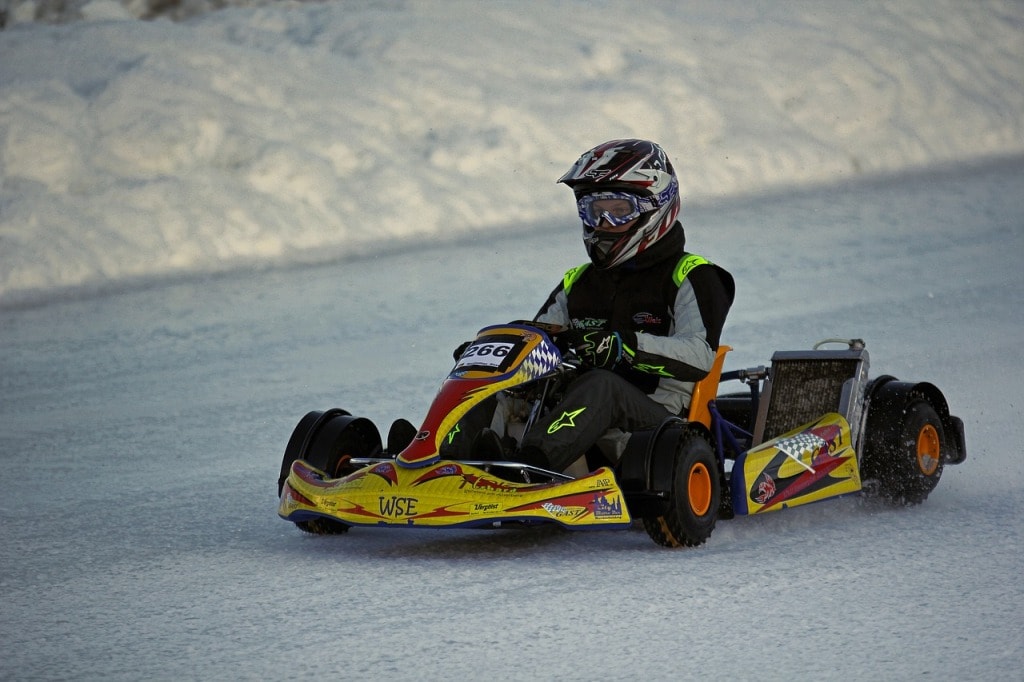
Image by ReinhardThrainer via Pixabay
A backyard that's at least ¾ an acre is required for learning how to ride a go-kart. Learn how to drive with one foot on either the brake or gas and avoid pressing both pedals at the same time. Decisive driving is important when operating any vehicle, even a go-kart.
Your clutch will rev up at 2,000 rpm, but close up around 2600 rpm. Drive at full throttle to lock the clutch on the drum. Full throttle makes the clutch get cooler. The shoes slip against the drum when the clutch isn't locked. The unlocked clutch and slipped shoes generate excessive heat and dry the bushing lubrication.
The heat also anneals the spring at the center of the clutch. The clutch will break if the shoes become purple from tremendous heat. An overheated clutch results in a ruined spring that can't pull the shoes back when the go-kart idles.
Avoid reducing your go-kart speed by installing a restrictor in the kart’s carburetor to limit its rpm or control the gas pedal’s travel. Using a restrictor or limiting the gas pedal’s travel will result in clutch slippage. The clutch needs to attain full rpm to lock up and then begin to cool down.
You'll need a gear reduction kit to slow down your go-kart. The reduction kit slows down your kart, like training wheels slow down a bicycle. A gear reduction kit cuts the speed of the go-kart by 50 percent.
Extra Tip: Go- Kart Engines
Go-kart engines may be four-stroke, two-stroke or have an electric motor. Go-karts with electric motors are charged in an outlet between uses. These motors run on the power of lead-acid batteries and run for about 20 minutes on each charge. A kart with an electric motor is environmentally-friendly, and you can use it indoors or outdoors.
A four-stroke engine is an industrial cooled engine that uses gasoline. This internal combustion engine has a piston which requires four strokes taking place during two revolutions to power the crankshaft.
Four stroke cards are used on outdoor tracks due to the fumes emitted from the gasoline and can be used for racing or advanced recreational riding. Four stroke engines may have five to 20 horsepower or go up to 90 horsepower.
A two-stroke internal combustion engine has a piston that finishes two strokes in a single revolution to spark the crankshaft. A two-stroke go-kart may be powered by an electric motor or gasoline. A two-stroke engine is excellent for beginning go-kart drivers, and you can use it on indoor to outdoor tracks for recreational purposes.
A two-stroke go-kart may reach up to 250 km per hour. European and UK go-karts usually contain 100 or 125cc engines, but shifter kart with 125cc, 210 cc, and 250 ccs are also used.

